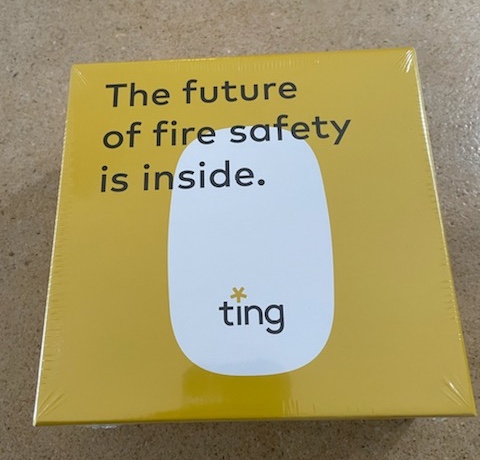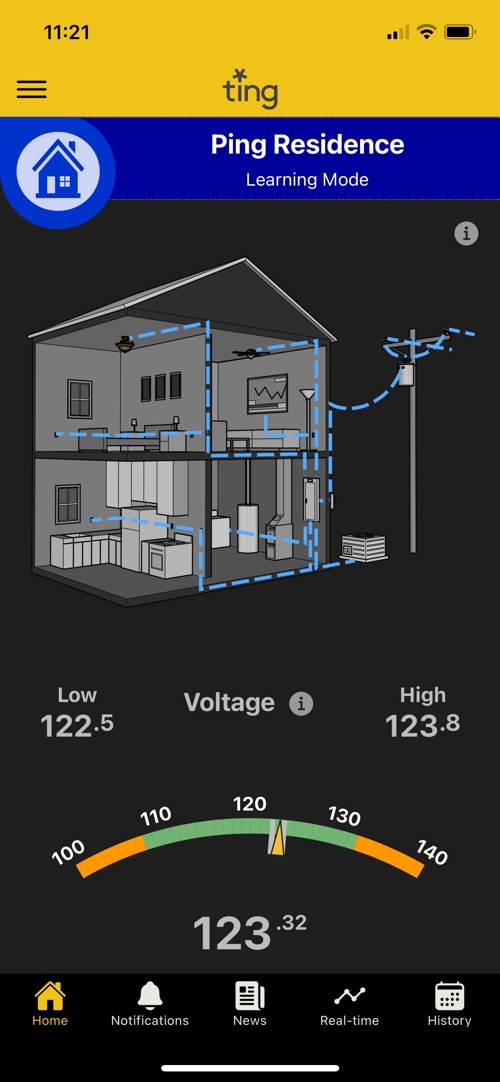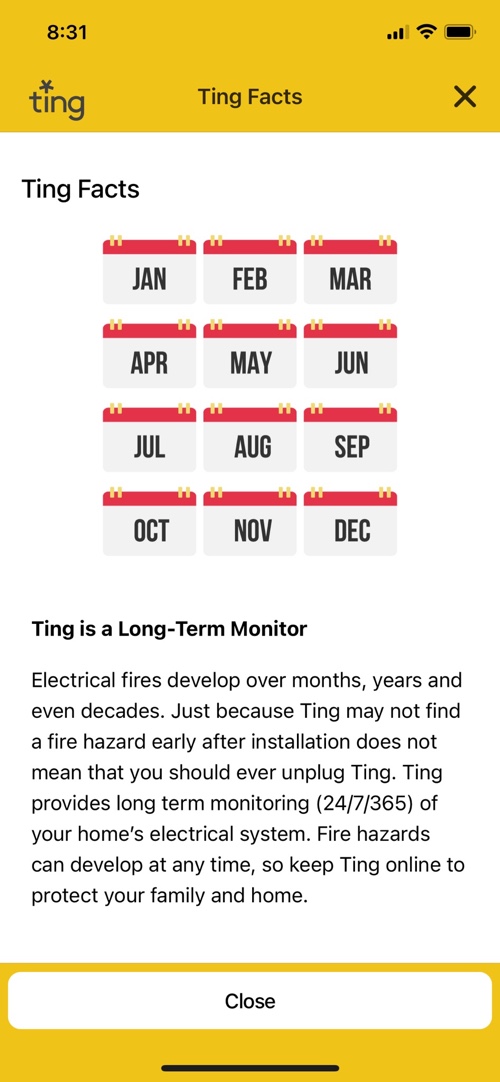
If you have State Farm homeowner’s insurance, check to see if you are eligible for a free Ting smart sensor that monitors your home’s electrical wiring for faults that can lead to fires. Three years of Ting service is included, which includes a $1,000 credit toward the cost of a licensed electrician to find and fix hazards found by Ting. Their press release states that electrical fires make up approximately 13% of all home fires.
Some of these preventive detections included sensing clear arcing signals isolated to a chandelier in master bathroom, identifying a missing neutral connection in a sub-panel, and detecting arcing signals consistent with water interaction with electrical system.
Qualified customers who enroll will receive:
– Free Ting sensor with mobile app access
– Pay no annual service fees for three years (fees paid by State Farm)
– Receive $1,000 credit toward remediation of electrical fire hazards (provided by Whisker Labs)
What happens after the 3rd year? Before the end of the 3rd year, State Farm will notify you if the program will be extended as-is, changed, or discontinued. No payment information is requested at the time of enrollment, and you can cancel at any time. There is no obligation to continue the service.
Do all hazards identified by Ting require a licensed electrician for mitigation? In many cases, remediation of the hazard simply means stopping the use of an offending device, such as a heating blanket, sump pump, lamp, or pet feeder (all of these are real examples, among many more). In other cases, a hazard requires professional remediation.
Hat tip to DoC, as I did not receive en e-mail regarding this even though I am eligible and have since gotten and installed my free sensor.
Currently available in the following states:
Alabama
Arizona
Arkansas
California
Colorado
Connecticut
Florida
Georgia
Hawaii
Idaho
Illinois
Indiana
Iowa
Kentucky
Maine
Massachusetts
Mississippi
Missouri
Montana
Nevada
New Hampshire
Ohio
Oklahoma
Pennsylvania
Rhode Island
South Carolina
Texas
Utah
Vermont
Virginia
Washington
Washington, DC
West Virginia
My experience. Enrollment was quick and easy, and the sensor arrived from Ting within a few days. Installation was also quick and easy; just install the app and everything is done via Bluetooth and WiFi within a couple of minutes. Right now, it is is “learning mode” and analyzing my home’s electrical wiring. It will be reassuring to know that there is no obvious electrical fire hazard lurking in my (old) home.


 The Best Credit Card Bonus Offers – 2025
The Best Credit Card Bonus Offers – 2025 Big List of Free Stocks from Brokerage Apps
Big List of Free Stocks from Brokerage Apps Best Interest Rates on Cash - 2025
Best Interest Rates on Cash - 2025 Free Credit Scores x 3 + Free Credit Monitoring
Free Credit Scores x 3 + Free Credit Monitoring Best No Fee 0% APR Balance Transfer Offers
Best No Fee 0% APR Balance Transfer Offers Little-Known Cellular Data Plans That Can Save Big Money
Little-Known Cellular Data Plans That Can Save Big Money How To Haggle Your Cable or Direct TV Bill
How To Haggle Your Cable or Direct TV Bill Big List of Free Consumer Data Reports (Credit, Rent, Work)
Big List of Free Consumer Data Reports (Credit, Rent, Work)
That is a great tip, Jonathan to look into, a potential for fires in houses.
I have Progressive insurance and my entire home is on Cat5e/Cat6 network cables, so this device would not apply to me. (I have headaches from WIFIs),
I do have even a better solution, why monitor for electrical line faults when you can mitigate them immediately when they are occurring.
I believe these products would work better than simple monitoring.
“What is an Arc Fault Detection Device?
An AFDD is a circuit breaker that automatically cuts the electricity supply when it detects an arc fault in a circuit. By immediately cutting off the electricity supply, AFDDs help to prevent arc faults from reaching temperatures where fires can break out.
Schneider Electric AFDDs comply with IEC 62606, a new international standard covering product safety and performance.”
https://www.se.com/au/en/work/products/product-launch/local/arc-fault-detection/
All you need to do is to install them in your pannel as a circuit breaker or have an electrician do it,
” Acti9 iDPN H VigiArc
Arc Fault detection with circuit breaker and RCCB function”
https://www.youtube.com/watch?v=Q-QmDozXuZ8
I wondered why these AFCIs/AFDDs are not required by the electrical code. According to Wikipedia, they have been required on “most residential outlets since 2014”, which means a lot of older homes may not have them unless remodeled recently.
https://en.wikipedia.org/wiki/Arc-fault_circuit_interrupter
Yes, my thinking is exactly like this too, if you have a newer home/remodel, you may not need these. My home was built in 1997 and don’t have these.
This is a product description video.
Would you pay $$$ for this if it wasn’t free?
It is very expensive to replace all circuit breakers with AFCI’s. I work for the Red Cross and respond to fires in Houston, TX every week- the vast majority of them are electrical. Ting devices just need wifi and a free outlet. I am grateful to State Farm for providing them to customers for no extra charge.
Hi Julie, I’m with Whisker Labs, the makers of Ting. We’re based out of Maryland, and as most folks already know, we currently only market Ting here, in our backyard, across all 50 states (350,000 homes and counting as of this post).
Thank you for your kind words regarding Ting, but more importantly, for your service with the Red Cross. Other insurers are launching Ting programs as well, given how well it has performed in preventing fires / fire-related losses.
We’ve learned a lot over the past few years regarding electrical fire ignition and prevention, with over 5,000 fully documented ‘save’ cases to date; we have reached out to the NFPA and US Fire Administration, and electric utilities, among others, with the goal of sharing these learnings. The key here, every case is fully documented – the hazard, the conditions found, the remediation steps, and the clearing of the hazard. Ting is a proactive, preventive solution for all homes regardless of age or electrical infrastructure makeup.
I do want to share an important note regarding your comment on AFCIs; for sure, a ‘full ‘replacement can be expensive for many homeowners, assuming it is required by the scope of a given project. If/when a remodel, upgrade, or repair mandates a new breaker or breakers to be installed, they should be installed in accordance with local/state/national codes, whether traditional, GFCI, AFCI, or combo GFCI/AFCI…and hopefully by a licensed professional.
Can I see Ting on my computer? If so, how do I set it up?
AS I UNDERSTAND TING . . . OUR HOME WAS BUILT IN 2019. I understand our circuit beakers were updated at that time and already have a “Ting” kind of product built into them. Is this true?
If not, I also understand there is no free lunch, so eventually, when do we pay a monthly or annual fee for getting the Ting data.
Thnaks